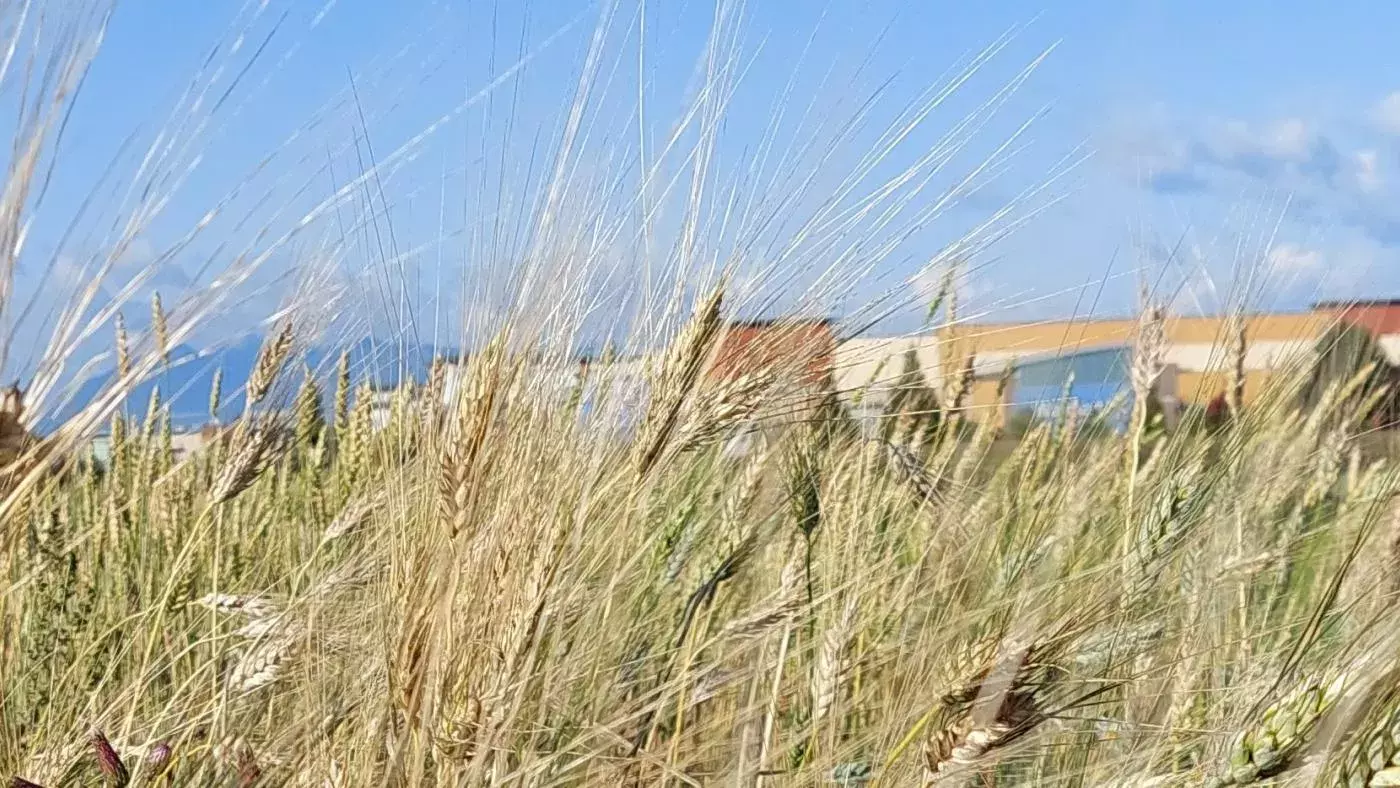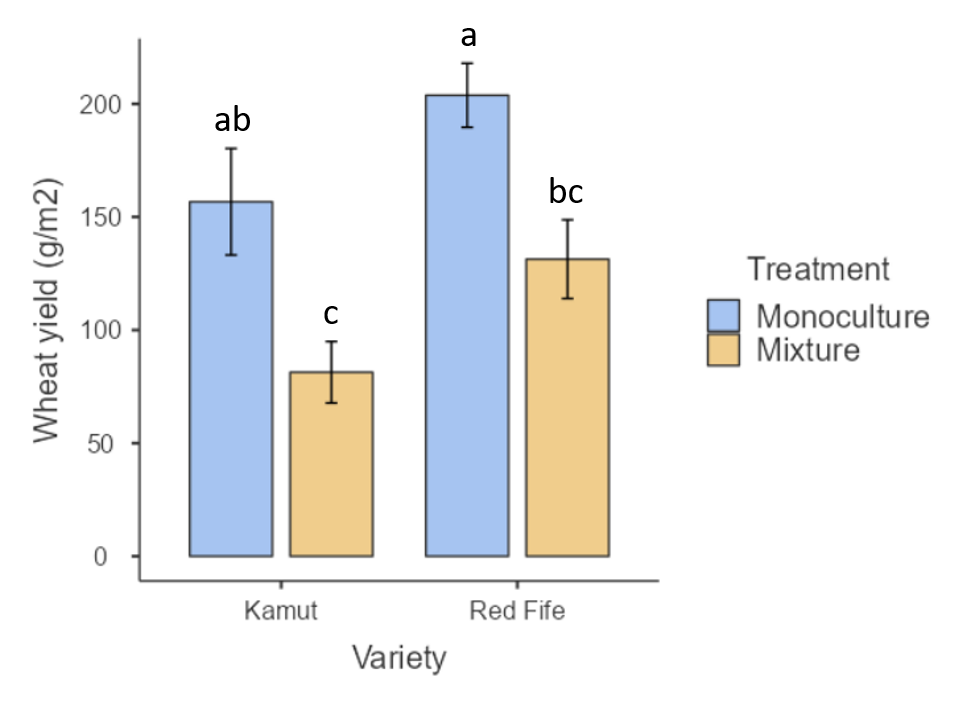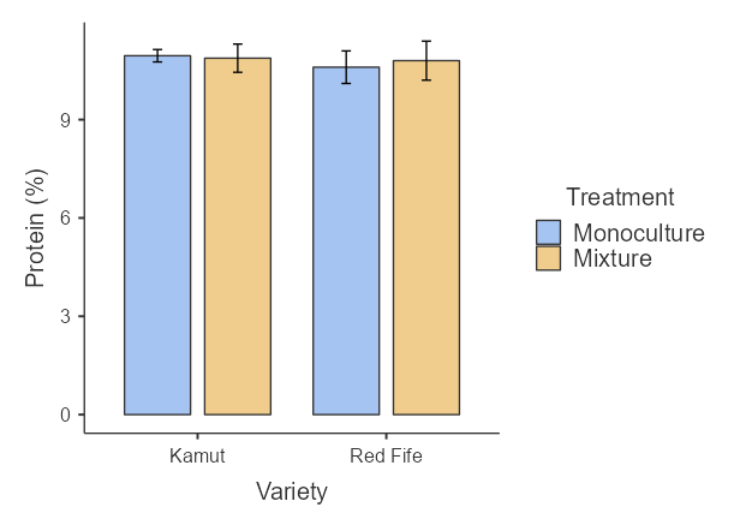

Intercropping heritage wheat with rye reduced wheat yield but did not affect protein content.
Sustainable Agriculture Student Research Project
Effect of Intercropping Wheat and Rye on Grain Yield and Protein ContentMuhammad Koodoruth, Department of Sustainable Agriculture, 2023 |
|
Introduction
Triticale is among the most important groups of crop plants due to its wide utilization for food, feed and beverages. It mainly contains rye, wheat, triticale and barley. Among them, wheat (Triticum aestivum L.) feeds more than half of the global population.
Different species within the group are sometimes planted as mixtures, called maslin. Maslin production has been practiced for at least 3000 years and was common in early medieval times. Growing wheat mixed with rye may increase stress to wheat plants, resulting in a higher protein content.
Objectives
This study compared wheat and rye maslin production to monocultures to test for:
- Impact on grain yield and land use efficiency; and
- Impact on protein content of wheat.
Methods
Location: KPU Farm at the Garden City Lands, Richmond, BC
Experimental Design: Randomized Complete Block Factorial Design with four replicates, two factors, and four treatments:
- Wheat variety factor:
- cv. ‘Kamut’
- cv. ‘Red Fife’
- Intercropping factor:
- Wheat monoculture (150 seeds/m2)
- Wheat mixed with rye (cv. ‘Gazelle’) (75 seeds/m2 for each crop)
Plot Size: 2 x 2 m
Planting Date: Direct-seeded on June 29th, 2023
Harvest Date: October 25, 2023 (118 days after seeding)
Dependent Variables:
- Dry weight of wheat
- Protein content of wheat
Results

Figure 1. Yield of ‘Kamut’ and ‘Red Fife’ wheat varieties in monocultures and 1:1 mixtures with ‘Gazelle’ rye. Error bars denote standard error. Means labelled with the same letter do not differ significantly (Tukey test, α = 0.05)

Figure 2. protein content in ‘Kamut’ and ‘Red Fife’ wheat varieties in monocultures and 1:1 mixtures with ‘Gazelle’ rye. Error bars denote standard error of each mean (n = 4).

Figure 3. Wheat yield and protein content by treatment. Marginal boxplots show treatment medians, range, and quartiles. No correlation was observed between yield and protein content.
Conclusion
Although wheat variety and rye intercrops both influenced wheat yield, no relationship was observed between wheat yield and protein content.
Millers prefer wheat with a protein content above 10.5%. Other studies have found protein content to be negatively correlated with yield and density, but positively correlated with nitrogen fertilization and weed pressure. Protein content in this study was mostly above 10.5%, but did not vary with the experimental factors tested.
Both ‘Red Fife’ and ‘Kamut’ are heritage varieties of wheat, which tend to have lower yields than modern varieties. The average yield in this study was 1.4 ± 0.1 t/ha, compared to an average Canadian wheat yield of 2.4 – 3.5 t/ha since 2019.